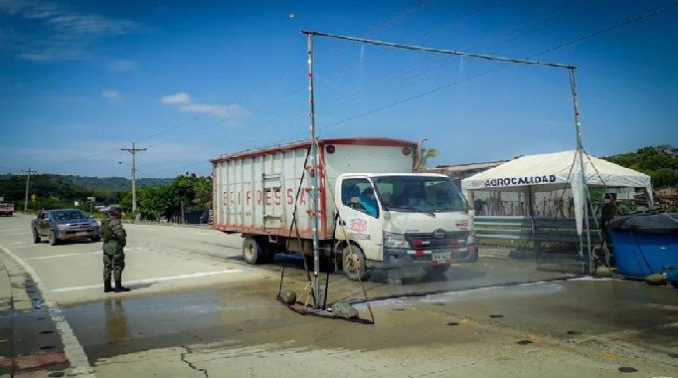
The plague was detected in Peru at the beginning of last April; in Colombia in August 2019, and in Venezuela there was a suspicion of their presence. But the National Institute of Integral Agricultural Health (Insai), of Venezuela in its Twitter account ruled out it and rather published a guide for producers on how to detect Fusarium in their plantations through the symptoms of the plant.
In Ecuador, on the other hand, on April 27, the Agency for the Regulation and Control of Phytosanitary and Zoosanitary (Agrocalidad) announced that the national territory is free of Fusarium Race 4 and that controls have been reinforced to prevent the fungus enter the country, as it is the largest banana exporter in the region.
Agrocalidad installed two new control points with disinfection arches for vehicles in the province of Loja, as part of the reinforcement of measures to prevent the fungus from reaching Ecuador. These are in addition to the two already enabled in the province of El Oro and which are operated by specialists in this type of action.
In turn, 12 border control points are operating that for years apply measures to stop the spread of the fungus and for this reason, 100% of the containers that leave them are disinfected in the ports, and in the airports and ports they are disinfected. performs the disinfection of passenger and crew footwear.

Be the first to comment